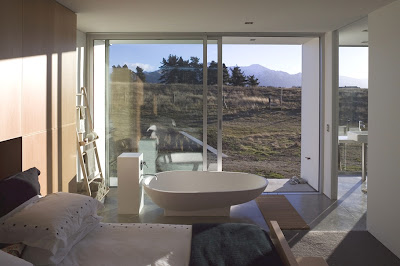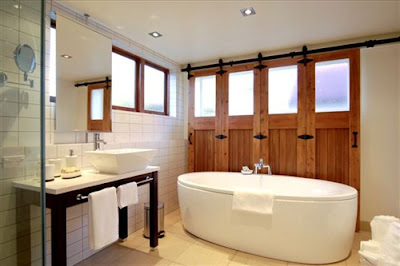In terms of architecture and interior design, New Zealand is a relatively young country when you compare it to the likes of America and England. The design choices, both interior and exterior, have traditionally mirrored that of the countries where most migrants originated from - predominantly the Pacific and Europe. However, over the last few decades New Zealand has developed its own tastes and architectural design elements that blend together the built environment and the unique surrounding natural environment. To compliment this style, interior design has also changed. New Zealand has created its own style that celebrates its heritage, and combined it with modern touches and creative flamboyance.
If you look back to the first half of the 20th Century, New Zealand homes were decorated very sparsely. Traditionally interior decorating included antique furniture, floral print fabrics, fine bone china and sparsely decorated rooms. By the 1940's state housing was predominant and interior decorating remained minimal.
Post-war immigration during 1950's could be seen as a starting point for subtle changes to our interior design choices. New Zealand experienced a large influx of immigrants leaving post-war Europe, including architects who brought with them the principles of the 'modern' architectural movement. At this stage Scandinavian designs were also taking the world by storm - both for exterior design and interior wooden pieces.
The 1960's and 1970's saw the beginning of more Pacific influences in design. Colourful and adventurous fabrics started to make their way into New Zealand homes. These fabrics complemented the new 'open plan' living and 'indoor-outdoor' flow of homes that started to emerge during the 1970's. At this stage New Zealand's distinct design tastes began to emerge.
By the 1980's there were a broad range of architectural styles available - colonial, American colonial, Cape Cod, Ranch, Swiss, Japanese and English country, Mediterranean, to name a few. As a result interior design also started to become more creative, and many consider the mid-1980's as the coming of age of interior design in New Zealand.
Over the next three decades New Zealand homes became truly international. All designs were tried, and architects also started to construct houses to fit New Zealand's unique environment. Homes were built to maximise sunlight with main living areas facing north, allowing more natural light. The open-plan look became the most popular with less internal walls and better flow, again taking advantage of natural light. And New Zealand's popular pastime of entertaining around the barbecue meant the popular indoor-outdoor flow was here to stay.
As a result, interior design changed also. Over the next three decades designers mixed all the cultural influences of European and Asian migrants with Maori and Pacific design, to emerge with what has become a distinct New Zealand style. Many homes started using fabrics and patterns that mixed outdoor elements with indoor décor colours. Interior designers combined different patterns and textures to bring homes to life.
Now you will find a mix of interior design choices in New Zealand homes. Floral, stripes, Maori koru and weaves, earthy tones and bright pacific colours all cleverly blended together to create a unique style. As well as the popular Pacific theme, many modern homes combine classic or antique pieces with modern décor, and retro interiors are also currently in vogue. Fabrics range from classic linen, cotton, and silk to new fabrics such as bamboo, merino and possum fur (sourced in New Zealand).
This comfortable blend of Pacific, Asian and European styles celebrates New Zealand's cultural heritage. Combined with modern touches and creative flamboyance, New Zealand has truly created its own unique architecture and interior design.
Silk Sensation offer luxury silk linen to both New Zealand and International homes. With a new range of natural fibre bamboo throws now available in vibrant colours, Silk Sensation can add a splash of difference and a touch of luxury to furniture and bedding in your home.













0 comments:
Post a Comment